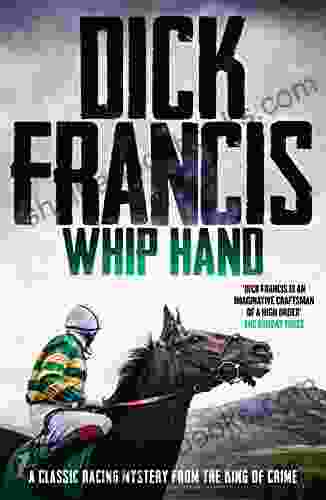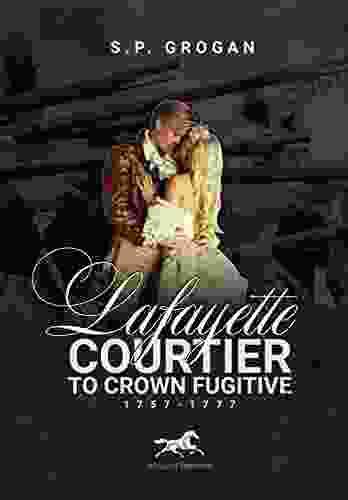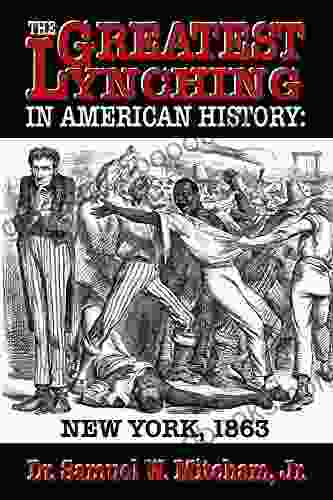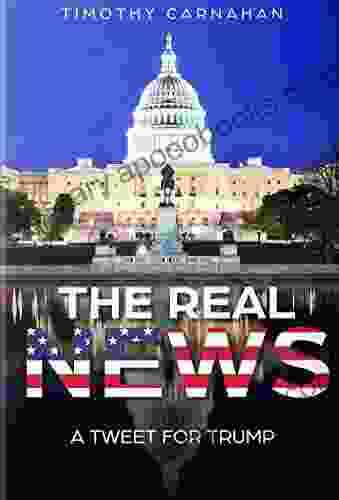Presidents and the Constitution: The Living History

The Constitution of the United States is the supreme law of the land. It establishes the framework for our government and protects the rights of all Americans. The presidency is one of the most powerful positions in the world, and the Constitution gives the president a great deal of authority.
4.3 out of 5
| Language | : | English |
| File size | : | 4035 KB |
| Text-to-Speech | : | Enabled |
| Screen Reader | : | Supported |
| Enhanced typesetting | : | Enabled |
| Word Wise | : | Enabled |
| Print length | : | 708 pages |
| Paperback | : | 92 pages |
| Item Weight | : | 4.8 ounces |
| Dimensions | : | 6 x 0.21 x 9 inches |
But the relationship between the president and the Constitution is not always a simple one. The Constitution limits the president's power in some ways, but it also gives the president a great deal of discretion in other ways. This can lead to conflict between the president and other branches of government, or even between the president and the American people.
This book tells the story of how the Constitution has shaped the presidency and how the presidency has shaped the Constitution. It is a must-read for anyone interested in American history or politics.
The Early Presidents
The first presidents of the United States were all men who had played a major role in the American Revolution. They were committed to the principles of republicanism and limited government. They also believed that the Constitution was a living document that could be adapted to changing circumstances.
George Washington, the first president, set many of the precedents for the office. He established the tradition of a two-term presidency and he refused to accept a third term. He also created the cabinet, which is a group of advisors who help the president run the government.
Thomas Jefferson, the third president, was a strong believer in states' rights. He believed that the federal government should have only those powers that are specifically granted to it by the Constitution. He also expanded the size of the United States by purchasing the Louisiana Territory from France.
James Madison, the fourth president, was known as the "Father of the Constitution." He was one of the main authors of the Constitution, and he played a major role in the ratification process. He also led the United States through the War of 1812.
The Jacksonian Era
Andrew Jackson, the seventh president, was a populist who believed that the government should be responsive to the needs of the people. He vetoed more bills than any other president in history, and he often clashed with Congress. He also expanded the power of the presidency, and he used it to promote his own agenda.
Martin Van Buren, the eighth president, was a close ally of Jackson. He continued Jackson's policies, and he also helped to establish the Democratic Party.
The Civil War and Reconstruction
Abraham Lincoln, the sixteenth president, led the United States through the Civil War. He issued the Emancipation Proclamation, which freed the slaves in the Confederate states. He also worked to reunite the country after the war.
Andrew Johnson, the seventeenth president, succeeded Lincoln after his assassination. He was a strong supporter of states' rights, and he vetoed several bills that were designed to help the freed slaves.
Ulysses S. Grant, the eighteenth president, led the United States through the Reconstruction era. He worked to rebuild the South and to protect the rights of the freed slaves.
The Gilded Age
Rutherford B. Hayes, the nineteenth president, was a reformer who tried to clean up the corruption that had become widespread in the federal government. He also helped to end Reconstruction.
James A. Garfield, the twentieth president, was assassinated after only a few months in office. He was succeeded by Chester A. Arthur, who continued Garfield's policies.
Grover Cleveland, the twenty-second and twenty-fourth president, was a fiscal conservative who opposed high tariffs and government spending. He also vetoed the Sherman Silver Free Download Act, which would have inflated the currency.
The Progressive Era
Theodore Roosevelt, the twenty-sixth president, was a progressive who believed that the government should play a more active role in society. He supported antitrust laws, labor unions, and environmental protection.
William Howard Taft, the twenty-seventh president, was a conservative who did not share Roosevelt's progressive views. He supported the Payne-Aldrich Tariff, which raised tariffs, and he vetoed several antitrust bills.
Woodrow Wilson, the twenty-eighth president, was a progressive who led the United States into World War I. He also supported the League of Nations, which was an international organization that was designed to prevent future wars.
The Roaring Twenties and the Great Depression
Warren G. Harding, the twenty-ninth president, was a conservative who returned the country to a more traditional approach to government. He supported the Fordney-McCumber Tariff, which raised tariffs, and he vetoed several progressive bills.
Calvin Coolidge, the thirtieth president, was a conservative who continued Harding's policies. He supported the Mellon Tax Cuts, which reduced taxes for the wealthy, and he vetoed several bills that were designed to help farmers and workers.
Herbert Hoover, the thirty-first president, was a conservative who did not take any action to help the country recover from the Great Depression. He supported the Smoot-Hawley Tariff, which raised tariffs even further, and he vetoed several bills that were designed to help the unemployed.
The New Deal and World War II
Franklin D. Roosevelt, the thirty-second president, led the United States through the Great Depression and World War II. He supported the New Deal, which was a series of programs designed to help the country recover from the Great Depression. He also led the country to victory in World War II.
Harry S. Truman, the thirty-third president, succeeded Roosevelt after his death. He continued Roosevelt's policies, and he also oversaw the end of World War II and the beginning of the Cold War.
The Cold War and the Civil
4.3 out of 5
| Language | : | English |
| File size | : | 4035 KB |
| Text-to-Speech | : | Enabled |
| Screen Reader | : | Supported |
| Enhanced typesetting | : | Enabled |
| Word Wise | : | Enabled |
| Print length | : | 708 pages |
| Paperback | : | 92 pages |
| Item Weight | : | 4.8 ounces |
| Dimensions | : | 6 x 0.21 x 9 inches |
Do you want to contribute by writing guest posts on this blog?
Please contact us and send us a resume of previous articles that you have written.
 Book
Book Novel
Novel Page
Page Chapter
Chapter Text
Text Story
Story Genre
Genre Reader
Reader Library
Library Paperback
Paperback E-book
E-book Magazine
Magazine Newspaper
Newspaper Paragraph
Paragraph Sentence
Sentence Bookmark
Bookmark Shelf
Shelf Glossary
Glossary Bibliography
Bibliography Foreword
Foreword Preface
Preface Synopsis
Synopsis Annotation
Annotation Footnote
Footnote Manuscript
Manuscript Scroll
Scroll Codex
Codex Tome
Tome Bestseller
Bestseller Classics
Classics Library card
Library card Narrative
Narrative Biography
Biography Autobiography
Autobiography Memoir
Memoir Reference
Reference Encyclopedia
Encyclopedia Sea Caummisar
Sea Caummisar M Benjamin Woodall
M Benjamin Woodall Denise Gibb
Denise Gibb Mel Nichols
Mel Nichols Golden Books
Golden Books Frank Erickson
Frank Erickson Roberto Calasso
Roberto Calasso Mary Ann Vitale
Mary Ann Vitale Dena Przybyla
Dena Przybyla Ralph Dolgoff
Ralph Dolgoff Denes Agay
Denes Agay Paul Singh
Paul Singh Jacqueline Grennon Brooks
Jacqueline Grennon Brooks Derrick Niederman
Derrick Niederman Helena Attlee
Helena Attlee Debra Devi
Debra Devi Judson Roberts
Judson Roberts Elyse Dodgson
Elyse Dodgson Jamie Skeie
Jamie Skeie Jessie Gussman
Jessie Gussman
Light bulbAdvertise smarter! Our strategic ad space ensures maximum exposure. Reserve your spot today!

 Brett SimmonsUnveiling the Explosive "The Scent of Danger": An Ursula Blanchard Mystery 18
Brett SimmonsUnveiling the Explosive "The Scent of Danger": An Ursula Blanchard Mystery 18 Anton ChekhovFollow ·17.8k
Anton ChekhovFollow ·17.8k Isaiah PriceFollow ·13.5k
Isaiah PriceFollow ·13.5k Gabriel Garcia MarquezFollow ·3.6k
Gabriel Garcia MarquezFollow ·3.6k Douglas PowellFollow ·5.4k
Douglas PowellFollow ·5.4k Israel BellFollow ·3.3k
Israel BellFollow ·3.3k Harvey HughesFollow ·17.2k
Harvey HughesFollow ·17.2k Jason ReedFollow ·10.1k
Jason ReedFollow ·10.1k Darius CoxFollow ·10.3k
Darius CoxFollow ·10.3k

 Clarence Mitchell
Clarence MitchellCollection Of Handcrafted Plants For The Blackest Of...
Do you have a black...

 Edgar Hayes
Edgar HayesClassic Racing Mystery From The King Of Crime
Agatha Christie, the...

 Demetrius Carter
Demetrius CarterLafayette: Courtier to Crown Fugitive, 1757-1777
The Marquis de...

 Jared Powell
Jared Powell30 Gorgeous Sweaters, Cardigans, Hats, Toys & More:...
Immerse Yourself...
4.3 out of 5
| Language | : | English |
| File size | : | 4035 KB |
| Text-to-Speech | : | Enabled |
| Screen Reader | : | Supported |
| Enhanced typesetting | : | Enabled |
| Word Wise | : | Enabled |
| Print length | : | 708 pages |
| Paperback | : | 92 pages |
| Item Weight | : | 4.8 ounces |
| Dimensions | : | 6 x 0.21 x 9 inches |













